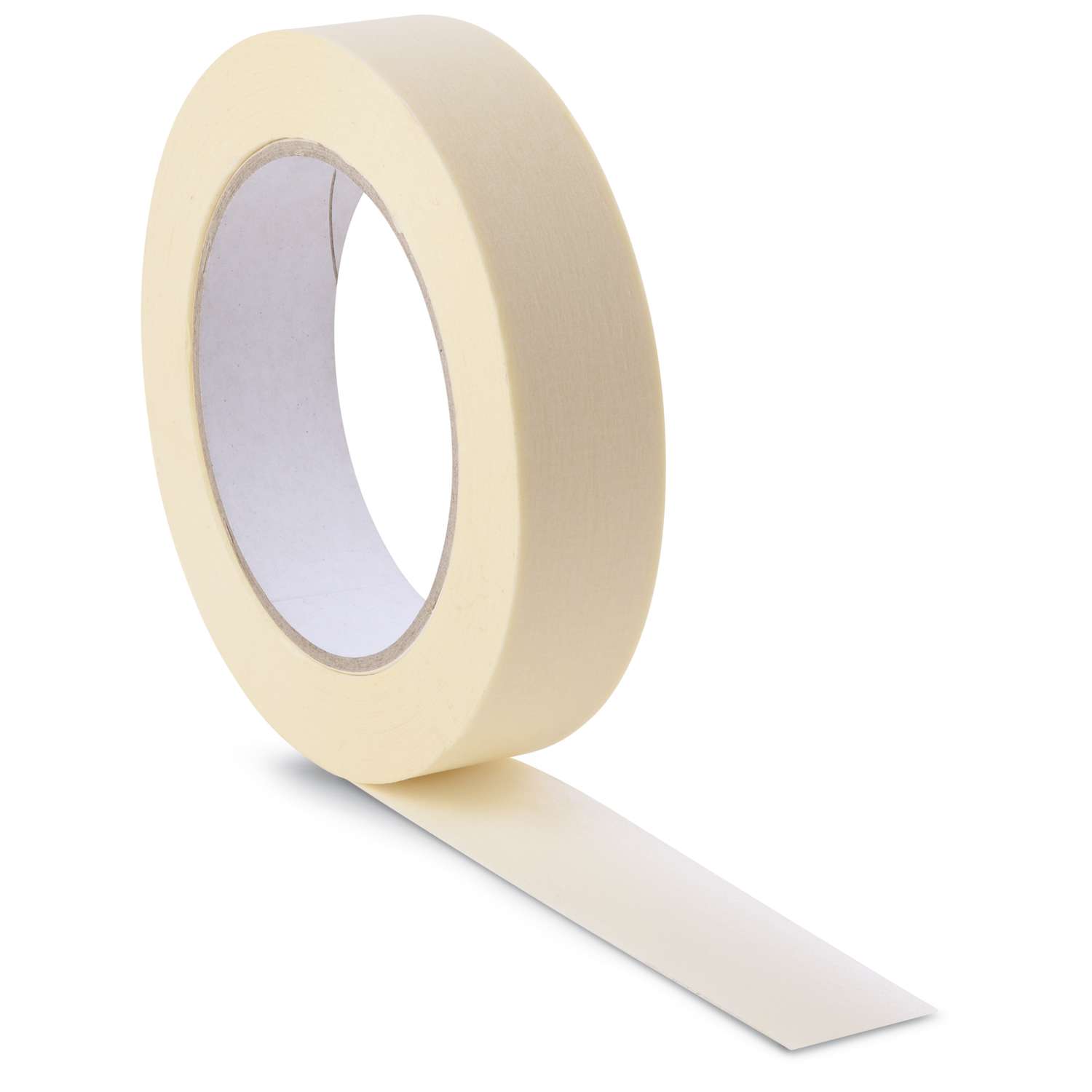Masking Tape
(2 Products)Ensure every paint job comes out pristine with our masking tape products. Masking tape is a light adhesive paper tape which can easily be torn by hand. It is commonly used in a variety of applications, from painting and home improvement to crafting and packaging. The adhesive on masking tape is designed to provide a temporary bond to a surface, allowing it to be easily removed further down the line.
What Is Masking Tape?
Masking tape is an ideal adhesive solution for the temporary hiding and protection of surfaces that don't require a finishing process.
It serves as a guard during procedures such as painting, soldering, spraying, coating, or polishing to ensure nearby areas remain unscathed while these activities are performed. Thus, it is an absolute essential in any painter or decorator's toolbox.
Masking tapes work similarly to other adhesive tapes - comprising a single-piece backing and an adhesive on one side.
Masking Tape Applications
Masking tape is, as its name implies, intended to mask areas from exposure to paint and other liquid products.
Common areas which need masking are:
- Skirting boards
- Vinyl
- Doors
- Windows
Ultimately masking tape is designed to save you time, minimise errors and facilitate in achieving a professional finish overall.
Let's take a look at its most common applications below:
- Painting - creating straight lines/edges and protecting areas that don't require painting
- Decorating jobs
- Spray painting cars - preventing overspray
- Prevents paint from bleeding onto surrounding walls or light fittings
Masking Tape Key Features
- Pressure-sensitive adhesive allows it to stick firmly to most surfaces, but can also be removed without leaving residue or damaging the surface.
- Designed to tear easily by hand, making it easy to apply and remove quickly.
- Comes in a variety of widths and lengths to accommodate different project needs.
- Majority of types are water-resistant - suitable for various applications.
- Aids in achieving a straight line on paint projects.
- Flexible design allows it to conform to irregular surfaces, such as corners or curves.
Masking Tape Composition
Masking tape comprises two key layers in its composition:
- A fine wafer-thin crepe paper backing which eradicates the need for cutting tools.
- A layer of adhesive, the type of which will depend on the intensity of bonding needed. This layer of adhesive can come in the form of solvent-free, hot melt or acrylic-based varieties.
Frequently Asked Masking Tapes Questions
What Is The Difference Between Masking Tape & Painter's Tape?
To put it plainly, the essential difference between these two types of tapes lies in their purpose: Painters’ tape is deliberately created to keep paint from smudging onto masked sections and can be taken off without leaving any residue behind.
By contrast, masking tape is an older and sturdier type of adhesive with a specially designed formula to ensure it sticks. The most notable distinction between painter's tapes and masking tapes is that the former can be removed without leaving any residue; however, if you leave masking tape on for too long, some stickiness may remain after removal.
What Is The History Behind Masking Tape?
Since 1925, masking tape has been a staple in many households and workspaces.
It was Richard Gurley Drew, an industrious sandpaper manufacturer who had the ingenious idea for this product when he saw auto-body workers struggling with butcher paper to cover cars they were painting. Masking tape emerged as the perfect solution!
How Long Can You Leave Masking Tape On?
Masking tape should be removed sooner rather than later or it runs the risk of bonding too securely to a surface and thus, leaving behind a residue.
For the best results, it's recommended to wait until your fresh coat of paint has dried completely - usually around one hour - before carefully peeling off the masking tape.
Generally, it is recommended that masking tape be removed within 24 to 48 hours to avoid leaving residue or damaging the surface.
Can Masking Tape Be Used On All Surfaces?
Masking tape is designed to be used on a wide range of surfaces, but its suitability for use depends on the specific surface and the type of masking tape being used.
What Is The Best Masking Tape To Use?
The way to determine the best type of masking tape for a given application is by noting the surface upon which you will be applying it. For example, you can get masking tape that is designed for use with wood, metal and wallpaper alike.
For painting and delicate surfaces, it is best to use low-tack masking tape that is specifically designed to be easily removed without damaging the surface or leaving any residue behind.
Making sure you select the right measurements is equally essential to find a masking tape that fits your project perfectly, as they come in various lengths and widths.
Can Masking Tape Be Reused?
Masking tape is not designed to be reused, as the adhesive properties will deteriorate after one use. Attempting to reuse masking tape can result in poor adhesion, making it ineffective for its intended purpose.

